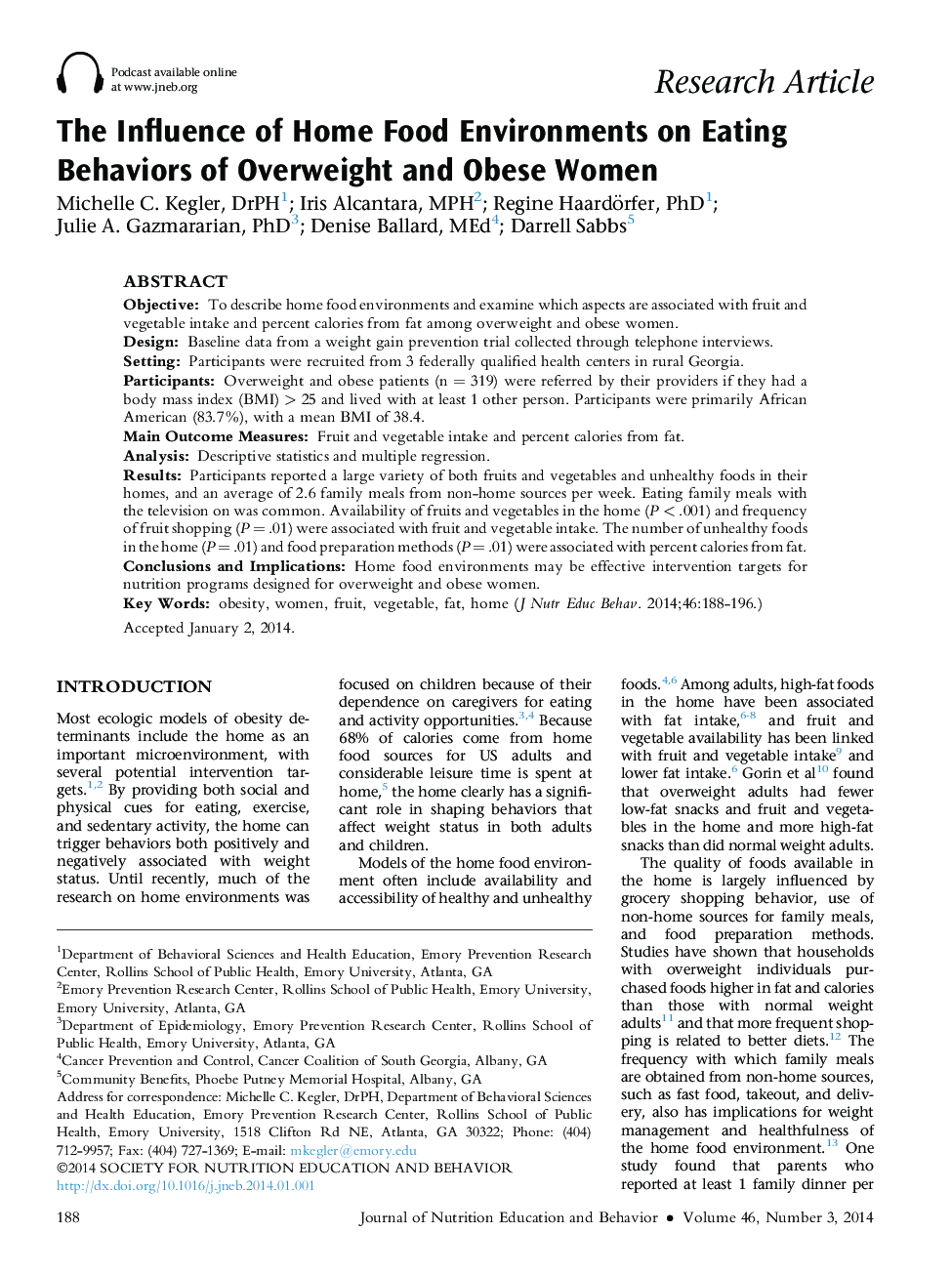| Article ID | Journal | Published Year | Pages | File Type |
|---|---|---|---|---|
| 361420 | Journal of Nutrition Education and Behavior | 2014 | 9 Pages |
ObjectiveTo describe home food environments and examine which aspects are associated with fruit and vegetable intake and percent calories from fat among overweight and obese women.DesignBaseline data from a weight gain prevention trial collected through telephone interviews.SettingParticipants were recruited from 3 federally qualified health centers in rural Georgia.ParticipantsOverweight and obese patients (n = 319) were referred by their providers if they had a body mass index (BMI) > 25 and lived with at least 1 other person. Participants were primarily African American (83.7%), with a mean BMI of 38.4.Main Outcome MeasuresFruit and vegetable intake and percent calories from fat.AnalysisDescriptive statistics and multiple regression.ResultsParticipants reported a large variety of both fruits and vegetables and unhealthy foods in their homes, and an average of 2.6 family meals from non-home sources per week. Eating family meals with the television on was common. Availability of fruits and vegetables in the home (P < .001) and frequency of fruit shopping (P = .01) were associated with fruit and vegetable intake. The number of unhealthy foods in the home (P = .01) and food preparation methods (P = .01) were associated with percent calories from fat.Conclusions and ImplicationsHome food environments may be effective intervention targets for nutrition programs designed for overweight and obese women.
